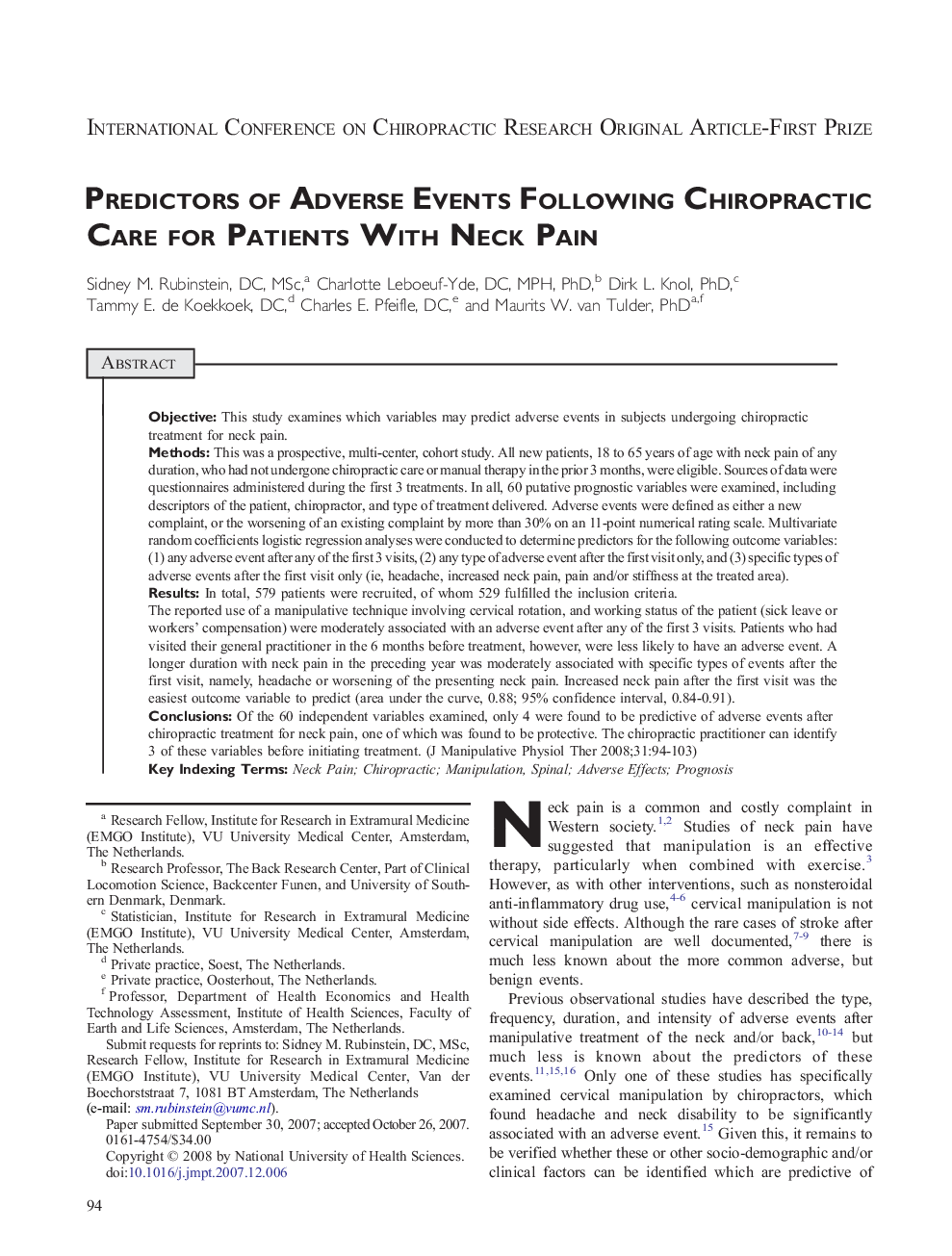| Article ID | Journal | Published Year | Pages | File Type |
|---|---|---|---|---|
| 2621132 | Journal of Manipulative and Physiological Therapeutics | 2008 | 10 Pages |
ObjectiveThis study examines which variables may predict adverse events in subjects undergoing chiropractic treatment for neck pain.MethodsThis was a prospective, multi-center, cohort study. All new patients, 18 to 65 years of age with neck pain of any duration, who had not undergone chiropractic care or manual therapy in the prior 3 months, were eligible. Sources of data were questionnaires administered during the first 3 treatments. In all, 60 putative prognostic variables were examined, including descriptors of the patient, chiropractor, and type of treatment delivered. Adverse events were defined as either a new complaint, or the worsening of an existing complaint by more than 30% on an 11-point numerical rating scale. Multivariate random coefficients logistic regression analyses were conducted to determine predictors for the following outcome variables: (1) any adverse event after any of the first 3 visits, (2) any type of adverse event after the first visit only, and (3) specific types of adverse events after the first visit only (ie, headache, increased neck pain, pain and/or stiffness at the treated area).ResultsIn total, 579 patients were recruited, of whom 529 fulfilled the inclusion criteria.The reported use of a manipulative technique involving cervical rotation, and working status of the patient (sick leave or workers' compensation) were moderately associated with an adverse event after any of the first 3 visits. Patients who had visited their general practitioner in the 6 months before treatment, however, were less likely to have an adverse event. A longer duration with neck pain in the preceding year was moderately associated with specific types of events after the first visit, namely, headache or worsening of the presenting neck pain. Increased neck pain after the first visit was the easiest outcome variable to predict (area under the curve, 0.88; 95% confidence interval, 0.84-0.91).ConclusionsOf the 60 independent variables examined, only 4 were found to be predictive of adverse events after chiropractic treatment for neck pain, one of which was found to be protective. The chiropractic practitioner can identify 3 of these variables before initiating treatment.
